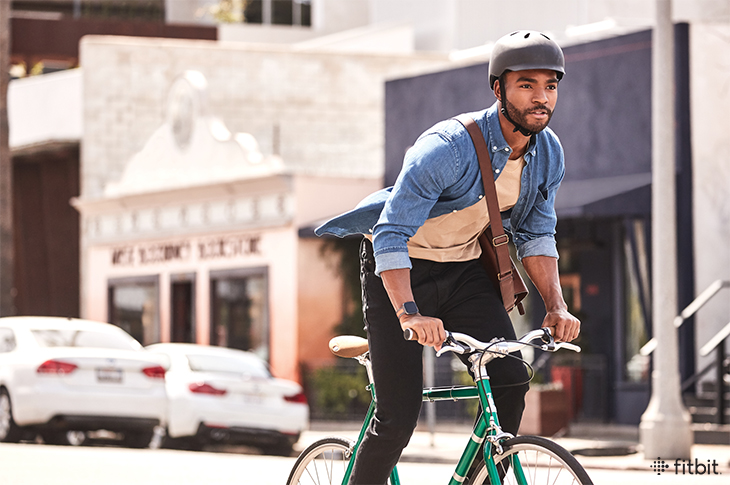
As people start returning back to the office after working from home, some may be looking for other commuting options to replace a crowded subway or bus. And biking to work may become more popular.
While nobody can predict the future, shifting to a commute on two wheels takes some planning. For example, you may want to drive into the office once a week to drop off some clothes and leave a pair of dress shoes under your desk. And if you decide to bike to work long-term, you’ll probably also want to invest in a good bag and learn how to pack it so that you are comfortable and don’t squish your lunch.
We talked to packing and travel expert Anne McAlpin to learn what to look for in a commuter bag as well as how to pack like a pro.
Find the Best Bag
“The biggest mistake I see people make is they usually have the wrong bag,” McAlpin says. “It’s not designed for their type of travel.” Here’s how to choose your best carryall.
Make a list. First make a checklist of everything you think you need to pack. Then carefully go back over that list and decide: Do you really need all of that? You may be able to leave some items at the office or forgo them.
Backpack vs messenger bag. Once you have an accurate list of what you’ll need to pack, then decide how big of a bag you need to carry it all. Compared to a messenger bag, a backpack is better for your back and more evenly distributes weight. However, some commuters prefer the easier access of a messenger bag. In the end, it’s your personal preference.
Go for waterproof. Whatever you do, McAlpin recommends a waterproof bag. That way, should you get caught in a downpour, your items should remain dry. Roll-down-top-style bags provide further protection from the rain, she adds. You can also purchase a rain cover for your backpack if that’s more your style.
Pockets or no pockets. Think about how you like to organize when you back a suitcase, McAlpin says. “Do you like having pockets, or do you prefer a big, empty box?” That will help you decide what features you’d like in a commuter bag. If you go with pockets, be sure any zippers are sealed—if not, water can leak in if it rains. That may not be a deal breaker, but be sure you don’t put valuables in those pockets then, or always have some ziploc bags on hand for added protection. Some backpacks also have a zippered pocket that rests against your back, perfect for your phone or other items you don’t want to risk getting pick-pocketed.
Go for padded straps. “Padded or wide straps will evenly distribute the weight and are more comfortable,” McAlpin says. If you use a backpack, you may also want a waist strap to help keep the bag from shifting as you bike.
Consider reflectivity. Especially if you will be commuting during the early morning or later evening when it’s dark outside, reflective markings on your bag will make you more visible to drivers.
Look for a laptop compartment. If you know you’ll carry your laptop more often than not, a dedicated laptop pocket will help protect your tech should you drop the bag or have items in your bag that could scratch it, McAlpin says. Same goes if you’ll carry a tablet.
Get a warranty. “Don’t buy cheap stuff,” McAlpin recommends. Most good brands and bags come with a lifetime warranty. The price tag is worth knowing your gear is safe and that you can get a replacement should anything happen to the bag. (Read the warranty before you make your purchase.)
Consider getting fitted. Fittings aren’t only for suits and wedding dresses. “You can have your bag fitted to your body,” McAlpin says. Many outdoor retailers and bike shops can do this. They’ll measure your back to help determine which bag is best for you and help adjust it to your body.
Pack Like a Pro
Now that you have your bag, it’s time to pack! Here are McAlpin’s tips.
Don’t overpack. Many people take too much, McAlpin says. If your checklist was accurate, this shouldn’t be a problem. However, as you commute, you may discover other items you don’t need or that you can leave at work rather than carry every day.
Leave shoes at work. Or if you want to bring shoes into the office, put any socks inside of them and pack them in a plastic bag. When you change shoes, you can put your sweaty, possibly dirty commuting shoes in the bag so nothing else gets messy. Put your shoes either on the bottom of the bag (nested toe to heel so they take up less room) or place one on each side of your laptop for added protection.
Put your clothes on the bottom. Put your shirt on a flat surface and place your pants on top. Fold any sleeves and other excess material from the shirt in over the bottoms. Then roll everything, McAlpin says, smoothing the fabric out as you go. “This doesn’t really wrinkle your clothing unless it’s 100-percent cotton,” she says.
She suggests putting your rolled clothes in clear packing cubes for several reasons: One, if you open your bag and items fall out, you don’t have to worry about your underwear falling on the sidewalk. Two, when you want your clothes, you don’t have to dig through your bag to find them. And three, when you arrive at work, you can pull out the cube and take just that to the bathroom to change rather than taking your entire bag.
Put your clothes on top of your shoes (if you’ve packed those too) at the bottom of your bag, McAlpin recommends.
Slide in your laptop. If you haven’t already added it in step 2 with your shoes, put your laptop in its designated area.
Add your lunch. If you’re packing any meals or snacks, place them in reusable plastic containers so they don’t get crushed, McAlpin says. But this on top of your clothes. Keep your water bottle handy, though, ideally in a cage on your bike.
Top it off with essentials. Anything you’ll need the minute you get off your bike—your lock, office pass, phone, wallet—pack into another cube and place those on the top of your bag, McAlpin says. That way you can grab them all in one swoop, with no digging. For women, you may choose to put these items in a small shoulder bag that you use once you arrive at the office, McAlpin adds. Then, should you go out to lunch, you don’t need to take your entire big commuter bag with you.
Consider a few extras. These days, you want to keep a face mask and possibly hand sanitizer and gloves handy. These could go in a side pocket or the final packing cube. And should the forecast call for rain, put your coat on top of everything. “That adds an extra layer of waterproofing,” McAlpin explains. Lastly, a small microfiber towel or cloth in an easy-access pocket can be used to wipe down a wet bike seat or glasses. When you wring it out, it will be about 90 percent dry, she says—much better than lugging a heavy, sopping wet towel with you.
This information is for educational purposes only and is not intended as a substitute for medical diagnosis or treatment. You should not use this information to diagnose or treat a health problem or condition. Always check with your doctor before changing your diet, altering your sleep habits, taking supplements, or starting a new fitness routine.

If you have questions about a Fitbit tracker, product availability, or the status of your order, contact our Support Team or search the Fitbit Community for answers.
Please note: Comments are moderated and may not appear immediately after submission.